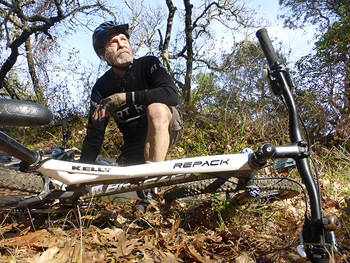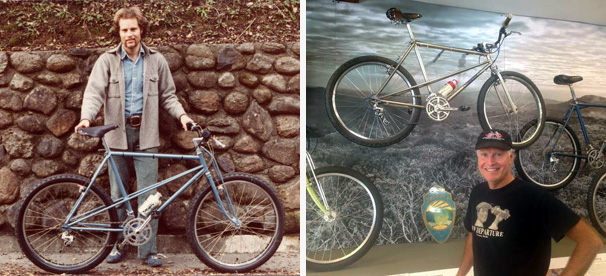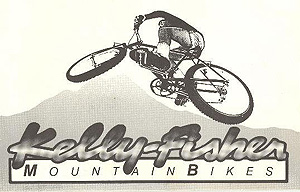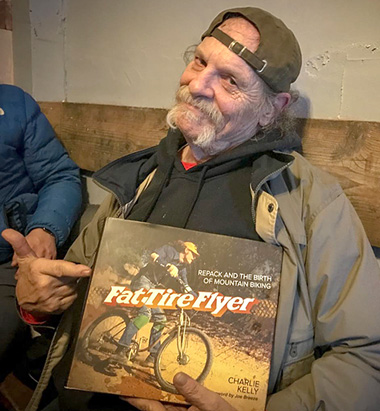
a Breezer Repack
Thanks for visiting my blog site.
If you came here looking for a connection to vintage mountain biking and the early days of the sport, you are in the right place.
In the early 1970’s, my fellow cycling friends and I would take our cruiser bikes, bikes we called klunkers, on rides in the hills of Marin County. At first this was for fun and a diversion from our more serious ventures in road biking and racing. It was a good time, but eventually we began modifying the bikes with gears and drum brakes cannibalized from old motorcycles. By the mid 1970’s “klunking” had become a thing with our group of friends and we spent a lot of time building up our old bikes and charting new rides around the hills of Marin County.
One fire road we commonly used as our final decent back into Fairfax became known as Repack. It was very steep, very fast and, because we were on our rear coaster brake most of the way down, the intense heat would burn up all the grease in our rear hub. By the time we made it to the bottom our coaster brake would hardly work and there would be smoke pouring out of the hub. We had no choice but to go home and repack the hub with more grease. Hence the name of the trail… Repack.

We often raced down Repack, which lent itself to a very dangerous motocross sort of descent with people jockeying for position and taking extraordinary chances to best each other. So one day we decided to have a timed race to see, once and for all, who was the fastest down Repack. I bought a couple of digital timers, which were a new technology at that time, and proceeded to organize the race. We naively thought this would determine the fastest rider and end the debate… but that was pure folly. All it did was encourage MORE races so others could have their shot at the title. So over the next several years I became the organizer and promoter of the Repack Downhill Race.
I must say that there were a lot of other moments, innovations and contributions, but most historic lore views Repack as the beginning of the sport of Mountain biking. It was certainly the event which put a spotlight on the idea of off road biking. It also pushed the idea of Klunking to a whole new level, one where there was real competition with a huge surge in technological advancement. Put another way, the race was a crucible where new technology, ideas and riding technique were tested. All of which would evolve klunking into something much bigger and better.

During the Repack race era, I asked my friend Joe Breeze to build me a bike frame specifically for this activity. The activity didn’t even have the name Mountain Biking at that time, but essentially I was asking Joe to build the first Mountain Bike. After much prodding, he built the frame, but then decided to keep it for himself. That bike, known as Breezer #1, is now on display in the Smithsonian. I got Breezer #2, the second frame in a 10 frame run of off-road bikes. Breezer #2 now hangs on the wall of the Marin Museum of Bicycling .
Thus were the early days.
Now I have to say I’ve probably had more adventures than one man deserves. And Mountain Biking has only been part of it.
In the days of klunking I was also the roadie for a band called Sons of Champlin. It was the late 60’s and early ’70s and we were in the thick of the San Francisco music scene. The Sons opened for a lot of big bands of the day and by default I ended up hanging out with and meeting the likes of Huey Lewis, Johnny Winter, Janis Joplin, New Riders of the Purple Sage, Steely Dan… just to name a few. At one point I even smoked a joint with Jerry Garcia. So aside from my biking adventures, I was privileged (almost beyond privileged!) to be part of a whole range of music adventures along the way.

My best friend and roommate back in those days was Gary Fisher. We both started off as road cyclists, but more and more klunking became part of our lives. Then, in late 1979 Gary and I joined forces with frame builder Tom Ritchey to start a company called “MountainBikes,” the first commercial effort to sell this new concept in bicycling. It would later become the namesake of the sport.
In 1980 I started the first magazine for mountain bikers, the Fat Tire Flyer. I wrote most of the content and published the magazine on a bi-monthly basis. Fat Tire Flyer lasted for several years, then later I wrote and contributed articles to every other bicycle publication in the United States, and several outside the country.
In 1983 I was a founding member of the National Off-Road Bicycle Association (NORBA), and wrote the first rules for mountain bike competition.
Because of my experience organizing and putting on the Repack races, in 1985 I was hired to consult on the very first Mammoth Kamikaze Downhill Race. This race would go on to inspire a lot of other races later in the 80’s and 90s, as well as bring the idea of mountain biking to ski areas as a form of Summer revenue in the less-snowy months.
In 1987 I was a charter inductee to the Mountain Bike Hall of Fame, and served as the master of Ceremonies for the induction.
As the 1990s exploded with the big business of mountain biking and sponsored races, I took a diversion and started a business completely out of the world of cycling. With my experience moving large equipment as a roadie, I opened Kelly Moving, a company in Marin that specialized in moving pianos. This became my bread and butter for the next couple decades. Although I continued to ride mountain bikes and was still recognized as one the sport’s pioneers, I was mostly out of the limelight.

In 2014 my book Fat Tire Flyer: Repack and the Birth of Mountain Biking was published. It goes into much greater detail about the adventures of my life and my exploits in the early days of klunking and mountain biking. If you do not yet have a copy and would like one, please see the store page on this site.
In 2018, with some help by Rob Korotky, I started the Mountain Bike Legacy Project, an effort to preserve, protect and make available to the public my very large and unique collection of written material, photographs and artifacts from the greatest bicycle adventure of the 20th Century. This blog is part of my effort to keep those archives alive. Stay tuned to THIS SITE for updates and announcements.
– Charlie
